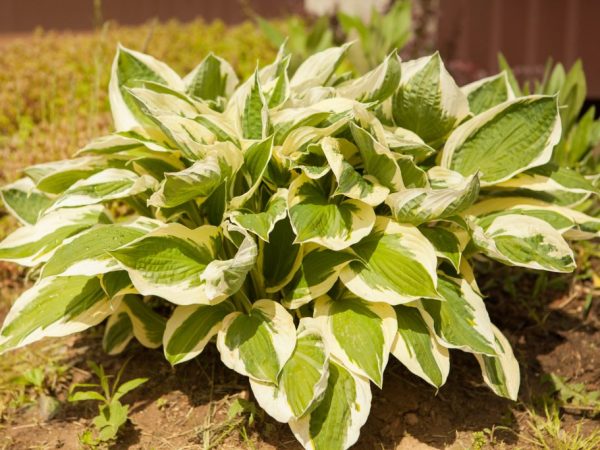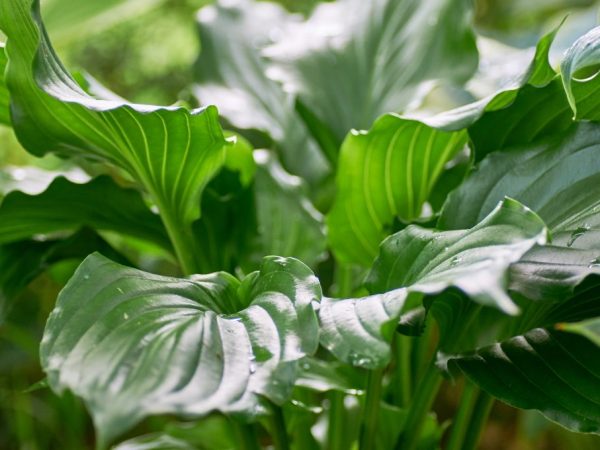Hosta transplant rules in the autumn
Hosta is a perennial ornamental plant that many gardeners and summer residents fell in love with. It belongs to the Asparagus family, the flower goes well with conifers and shrubs. But the correct hosta transplant requires some skill and knowledge.

Hosta transplant rules in the autumn
Care features
The host is considered to be unpretentious to care for. Originally from Southeast Asia, she is very popular in Japan. It grows without problems in open ground, the flowering plant can withstand sudden temperature changes and even frosts down to -15 ° C.
Important! Do not cover bushes with plastic wrap or other airtight materials. Such manipulations will lead to decay.
There are more than 40 varieties of varieties of this decorative culture. They differ in size, color, shape and texture of the leaf, they are striped and monochromatic. But caring for them is almost identical. Hosta is planted in early spring, late summer or early fall.
It is important to give the flower time to take root before frost (for an adult plant, this process takes less than one month). For planting, choose sprouts with 2-3 buds.
The hosta likes moist and breathable soil. Clay soil can be improved by adding mineral fertilizers and humus. Landing area should be shady but not dark.
Why transplant to host
The host needs to be transplanted for the following reasons:
- Each year, the flower multiplies, releasing new shoots. After some time (4-6 years), the bush, as a rule, is so thickened that it needs to be divided and planted.
- A young flower can be transplanted only if you are faced with a difficult adaptation: the leaves wither and turn yellow, lose their elasticity and fall out, fresh shoots do not appear, the color fades.
- It is also worth dividing and replanting the sprout if it has been attacked by a disease or insect. In a new place, it will be easier for you to cope with the infection that threatens the flower: fresh and fertile soil is a resuscitation in such cases.
Features and stages of transplantation in the fall
Planned transplanting and dividing hosts in early autumn is suitable for Tokudama and Siebolda varieties.
The rest of the species feel better if they are planted in a new place at a different time - in the spring. But in case of illness or wilting of the bush, transplanting decorative hosts in the fall may be urgently needed.

Transplanting in the fall is not suitable for all varieties
The optimal time for an autumn transplant is late August to mid September. The process itself takes place in several stages:
- Prepare your landing site. Avoid waterlogged, clayey, and moist soil. Dig in and remove all weeds. You can add fertilizer, peat, nutrient substrate for digging.
- A few hours before replanting the flower, moisten the ground liberally, but do not flood.
- Dig up the bush completely, free the rhizomes from the ground and sing them under running water.
- Examine the roots and separate the damaged branches.
- Rejuvenate the plant by trimming the ends of the roots with sharp scissors or pruning shears.
- Cut off all leaves, leaving only stems and shoots no more than 15 cm high.
- Divide the mother plant into several bushes (one should have no more than 5-10 shoots).
- Lay drainage (broken bricks or rubble) at the bottom of the planting pit. The next layer is calcined sand (to protect the roots from diseases and parasites).
- On top of the sand - humus or fallen leaves.
- Plant the seedlings and sprinkle with soil so that the root collar is at ground level.
- You need to plant so that the gap between the plants is at least half a meter.
- Water the new bushes liberally.
When you have finished replanting, prepare the site for winter: drip it and lay dry leaves, sawdust or peat around the plants. If you sprinkle a flower with tobacco dust or Fitosporin fertilizer, in spring not a single slug or snail will crawl up to it.
If you did not manage to plant the seedlings before frost, feel free to dig up the bushes and leave them for storage until spring.
To do this, put the roots in a ventilated plastic bag, add a little soil and peat and store at a temperature of no lower than 2 and no higher than 6 degrees (in a basement or refrigerator).
Conclusion
Transplanting a decorative hosta to another place in the fall is required when the bush needs rejuvenation or for reproduction. It is important to know how to properly prepare the plant for such a procedure so as not to harm. Proper care will ensure the health of the bush, and a healthy bush blooms beautifully and develops well.

